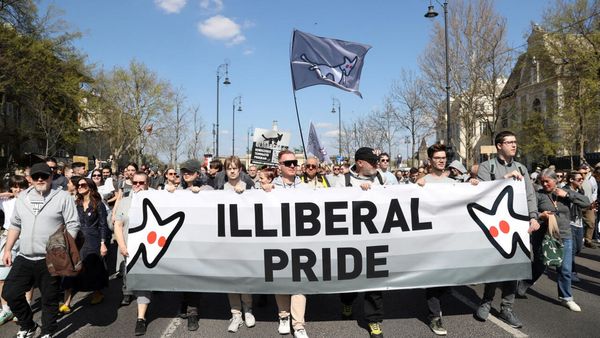
Investors piled back into Australian shares on Tuesday, ignoring a looming showdown between the US and China in a tariff battle that threatens to paralyse global trade.
The benchmark S&P/ASX 200 closed up more than 2%, representing its biggest one-day gain in more than two years.
The rebound erased some of the steep losses suffered on Monday when the share market recorded its worst session in five years, down by more than 4%.
The ASX reprieve comes ahead of an important juncture, given Donald Trump has issued a fresh threat to raise his tariffs on China by an additional 50% from 9 April if Beijing doesn’t withdraw its own retaliatory tariffs.
In response, China’s commerce ministry has vowed to fight US tariffs “to the end”.
Fund managers have told Guardian Australia they are looking for signs of a truce in the tariff tit-for-tat to signal that a sustained recovery in equities may be on the cards.
Chris Weston, the head of research at Pepperstone, said on Tuesday that Trump’s fresh tariff threat against China was a risk for traders and “should heighten the wall that the market needs to climb”.
While the details of Trump’s “liberation day” initially spooked investors, the retaliatory tariffs from major trading nations and blocs like China and the EU triggered market panic.
Traders have been weighing up whether Trump is using the threat of tariffs to cut deals or whether they will be locked into place this week, reordering global trade.
There is growing concern that if the latter occurs, a “full-blown trade war, imminent recession and a liquidity crunch last seen during the early pandemic” may ensue, according to IG analysts.
Meanwhile, the Australian share market is being pulled and pushed by international forces, and was led higher on Tuesday by the US futures market.
Australia’s benchmark closed at 7,510 points on Tuesday, up 2.3%, marking a shift in sentiment that saw share prices collapse the day before.
The Australian dollar was trading at US60.5c late on Tuesday afternoon, representing a robust rebound for the day, albeit still significantly lower than the 64c mark it reached last week before Trump’s tariff announcements roiled markets.
A weaker currency is generally bad for Australian travellers and consumers buying overseas goods, but positive for exporters.
The Australian dollar has close links to commodity prices, particularly iron ore, which would suffer if global economic activity slowed, especially in China.
While the market ruptures have caught many traders by surprise, State Street Global Advisors data shows that long-term institutional investors had reduced their exposure to shares last month ahead of the “liberation day” tariff announcement.
“Investor caution prompted a further retracement out of equities and into bonds and cash in approximately equal increments,” the State Street economist and market strategist Dwyfor Evans said on Tuesday.
Investors typically limit risk in their portfolios by allocating more of their portfolio to cash and fixed income, while reducing exposure to more volatile assets like equities.







